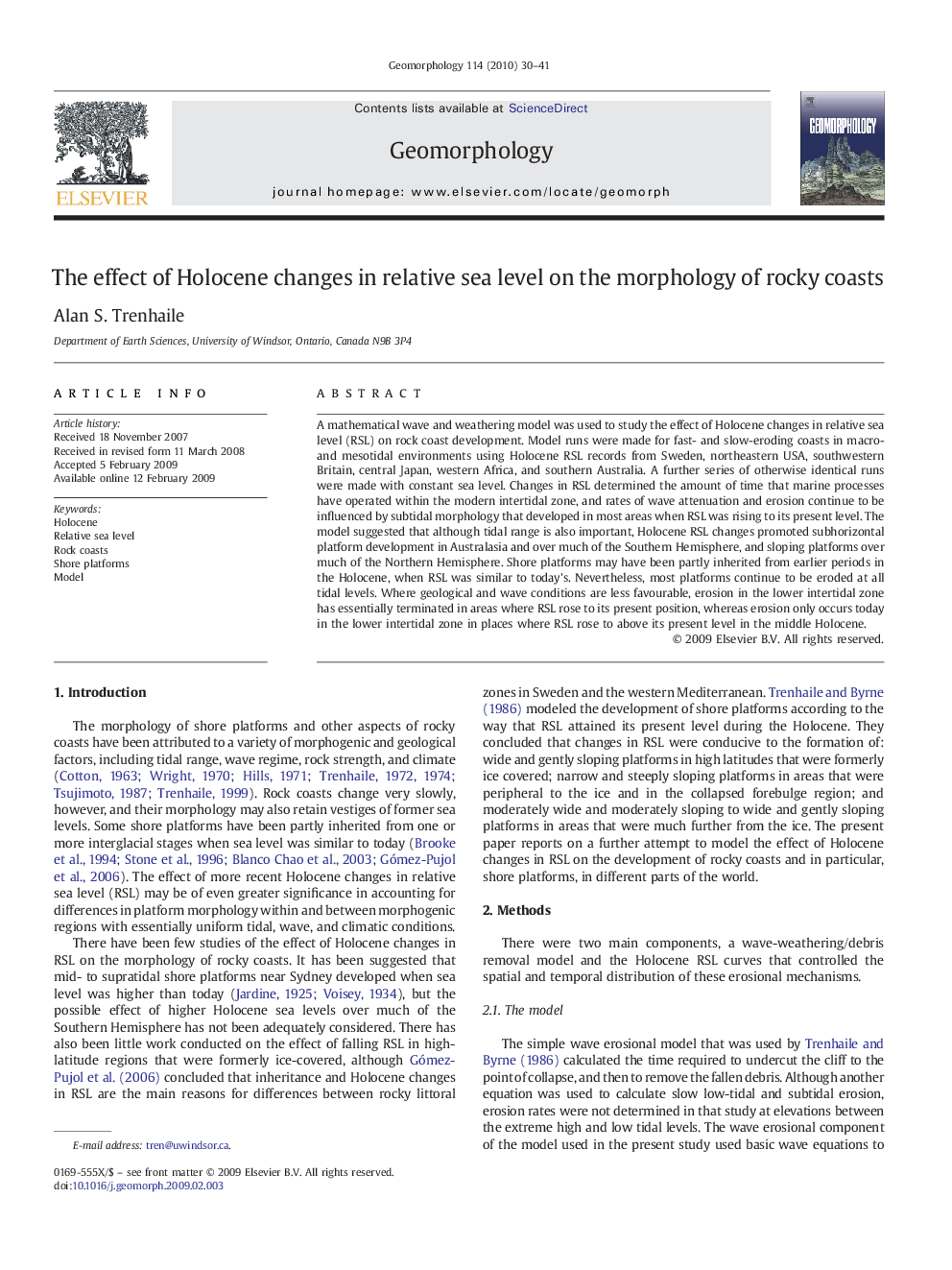| Article ID | Journal | Published Year | Pages | File Type |
|---|---|---|---|---|
| 4686072 | Geomorphology | 2010 | 12 Pages |
A mathematical wave and weathering model was used to study the effect of Holocene changes in relative sea level (RSL) on rock coast development. Model runs were made for fast- and slow-eroding coasts in macro- and mesotidal environments using Holocene RSL records from Sweden, northeastern USA, southwestern Britain, central Japan, western Africa, and southern Australia. A further series of otherwise identical runs were made with constant sea level. Changes in RSL determined the amount of time that marine processes have operated within the modern intertidal zone, and rates of wave attenuation and erosion continue to be influenced by subtidal morphology that developed in most areas when RSL was rising to its present level. The model suggested that although tidal range is also important, Holocene RSL changes promoted subhorizontal platform development in Australasia and over much of the Southern Hemisphere, and sloping platforms over much of the Northern Hemisphere. Shore platforms may have been partly inherited from earlier periods in the Holocene, when RSL was similar to today's. Nevertheless, most platforms continue to be eroded at all tidal levels. Where geological and wave conditions are less favourable, erosion in the lower intertidal zone has essentially terminated in areas where RSL rose to its present position, whereas erosion only occurs today in the lower intertidal zone in places where RSL rose to above its present level in the middle Holocene.
